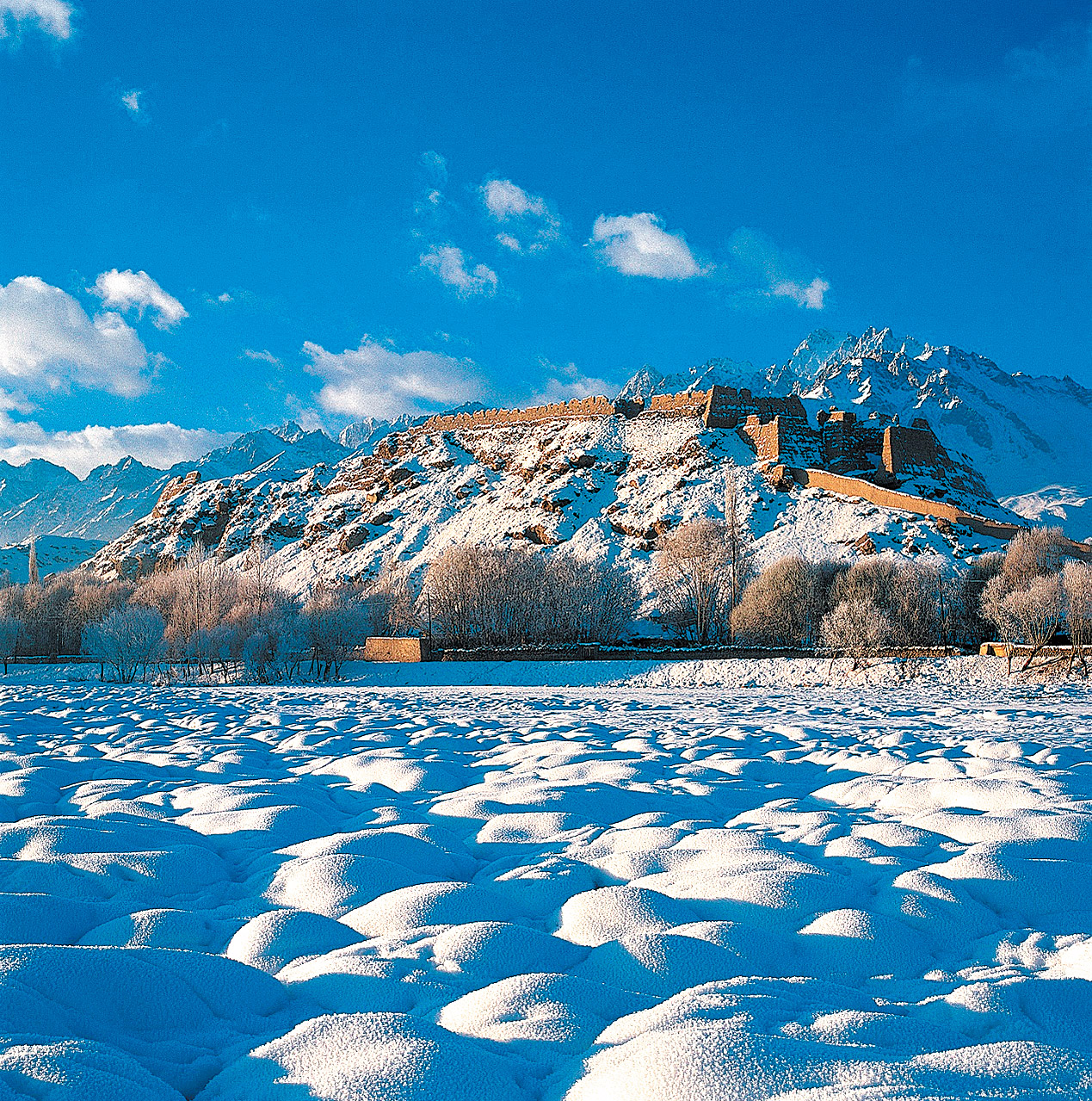Ancient Uygur melodies, once nearly forgotten, are back with fresh energy and global acclaim, Wang Xin reports in Shanghai.

Once considered on the brink of disappearance, the ancient art of Xinjiang Uygur Muqam is not only alive today but steadily gaining new vitality, evolving through modern innovation and finding audiences far beyond its homeland.
Among those keeping it vibrant is 41-year-old Alimjan Abliz, a ghijek (a round-bodied musical instrument with three or four metal strings and a short fretless neck) player with the Muqam Art Troupe of the Xinjiang Art Theater, who has been immersed in this tradition for 35 years. Despite decades of study and performance, his fascination remains undimmed.
"Muqam is colorful, comprehensive, complicated, yet extremely captivating," he says. "Everything in this art — its tempo, melodies, singing — is very beautiful. I love it from the bottom of my heart."
READ MORE: Carrying a lute of responsibility
Muqam is a sweeping artistic tradition that integrates singing, dancing and instrumental music. It is a general term for a variety of Muqam practices that have developed across Northwest China's Xinjiang Uygur autonomous region. As an ancient musical tradition in the region, its origins go back more than a thousand years, with a complete track record of over 400 years, according to Wang Chenjun, deputy director of the Muqam Art Troupe.

Muqam is one of the most treasured legacies of the Uygur ethnic group — an artistic system vast in structure, profound in meaning and stunning in its expressive power. Often staged as a grand suite of compositions, it is widely known as the "Pearl of Eastern Music" and the "mother of Uygur music".
Recognition of its global value arrived in 2005, when UNESCO proclaimed the Art of Uygur Muqam of Xinjiang (China) as a "Masterpiece of the Oral and Intangible Heritage of Humanity", marking it as a tradition worthy not only of preservation but of constant reinterpretation for future generations.
Part of Muqam's enduring appeal lies in its extraordinary diversity. It varies in content, rhythm and musical style, and can be performed as solo pieces or large ensemble works. It incorporates ancient folk ballads, poetry, proverbs, narrative storytelling and reflections on universal themes such as love, longing, celebration and the fragility of life. These performances mirror both the historical memory and contemporary experiences of the Uygur community.
Muqam ensembles feature lead instruments made from local materials and vary in form. The dancing skills involve unique steps, rhythms and formations, as well as movements such as flower-picking-by-mouth, bowl-carrying-on-head, and imitation of animals in solo dances.

Wang describes Muqam as an artistic lens through which one can understand Uygur life and worldview. "Muqam can be seen as an encyclopedia reflecting the life and social landscape of the Uygur ethnic group," he says. "Its musical patterns reveal a strong sense of continuity and inclusiveness, showing deep cultural connections between Xinjiang and China's central plains."
Today, the Muqam art in Xinjiang has developed into four main regional styles, namely the Twelve Muqam, Dolan Muqam, Turpan Muqam and Hami Muqam. Each carries a distinct aesthetic personality. The Twelve Muqam is renowned for its elegance, while Turpan Muqam radiates warmth and humor. Hami Muqam has an affectionate and vibrant nature, and Dolan Muqam is known for its vigorous and unrestrained qualities, according to a report by the Xinjiang Daily.
Among these, the Twelve Muqam is most widely known. Consisting of 12 complete compositions, it takes about 24 hours to perform in its entirety.
Yet, this celebrated tradition once nearly disappeared. In the late 1940s and early 1950s, economic upheaval, social change and the decline of oral transmission pushed Muqam to the brink of extinction. After the founding of the People's Republic of China in 1949, Xinjiang's local government began urgent efforts to preserve it.

In 1956, Muqam master Turdi Ahun and musician Wan Tongshu led a team and took great pains to record most of the vocal melodies and librettos of the Twelve Muqam on tape and paper. Four years later, two volumes of Twelve Muqam sung by Turdi Ahun were published, marking the beginning of its documented revival.
Their efforts paved the way for the renaissance of this cultural tradition, enabling more people to know and understand Muqam. As one of the Chinese government's significant efforts to preserve and inherit this art, the Muqam Art Troupe was established in Xinjiang's Urumqi in 1989 and has staged performances in over 140 countries and regions, Wang says.
For Abliz, who has traveled to more than 20 nations with the troupe to perform Twelve Muqam, the art's emotional resonance is universal, especially in countries and regions in Central, South and West Asia, as well as North Africa, and others along the ancient Silk Road.
"Muqam originated from daily life. We celebrate love and life with it, and such emotions are shared by people all across the world. We hope to help more people understand this art and like it," says Abliz.
Both Abliz and Wang note that interest among younger generations has grown significantly in recent years. To encourage deeper engagement, the troupe is working to create new forms of presentation.

Wang is currently leading a nationwide tour of a grand opera about the story of Wan Tongshu and the preservation of Muqam. The production incorporates classical selections, contemporary staging, digital projections and newly written lyrics, with the goal of introducing Muqam in a large-scale theatrical setting and demonstrating its relevance in the new era.
Abliz is also pursuing innovation through musical collaboration to blend ghijek with guitar, bass, drums, ney, rawap and kanun, to present Muqam music with refreshing sounds.
"Muqam is evolving over time. As an instrumentalist, I am looking to combine it with other Chinese traditional folk instruments such as the erhu (a two-stringed fiddle), pipa (a four-stringed Chinese lute) and the guzheng (a plucked zither), as well as Western instruments like the bass, guitar and electric keyboard. We have experimented a bit and the results are fantastic. I hope more young talents join us," says Abliz.
ALSO READ: Dance festival celebrates ethnic unity
They are not the only ones making efforts to help this ancient art further thrive on the global stage. Ma Xuguo, deputy director of Xinjiang's department of culture and tourism, says the region has rolled out diverse measures to support the protection and growth of local intangible cultural heritage.
"Xinjiang, standing at the crossroads where Eastern and Western civilizations converge, boasts vast expanses, diverse landscapes, and a rich tapestry of intangible cultural heritage. Xinjiang is effectively working to protect the 5,956 intangible cultural heritage items across the region, including Muqam, and to help them weave vibrant chapters in the new era."
Contact the writer at wangxin2@chinadaily.com.cn


